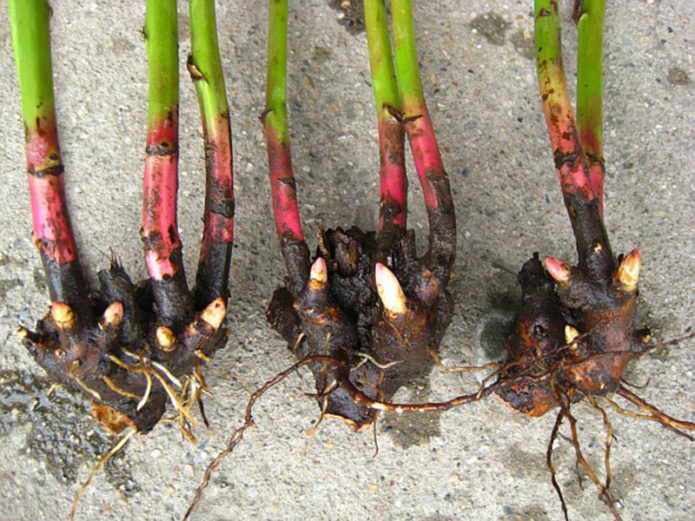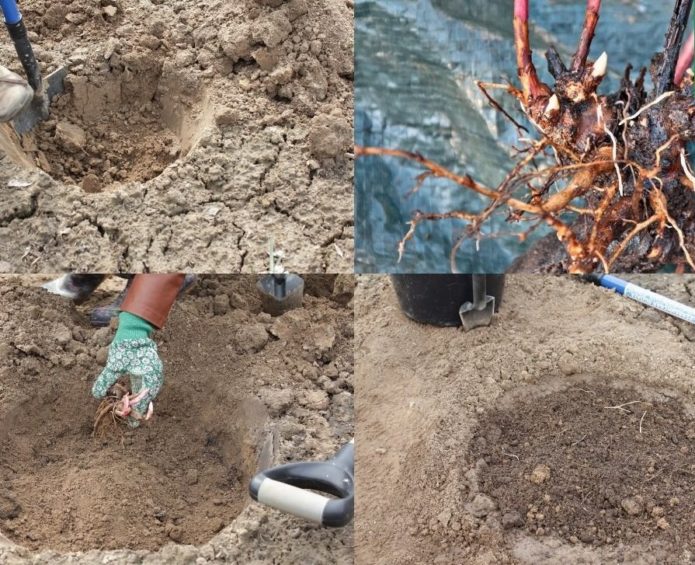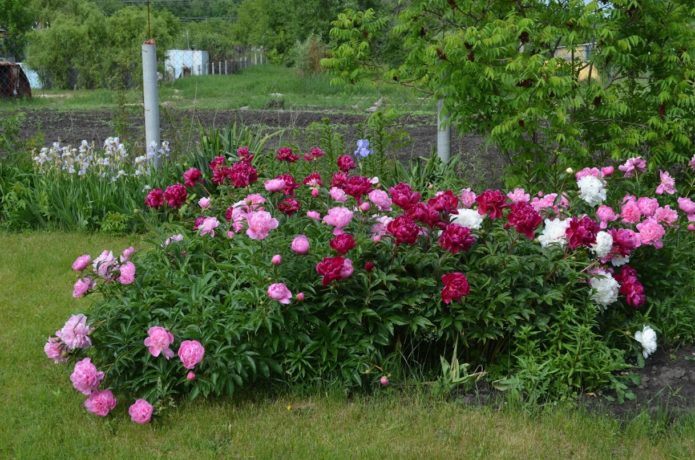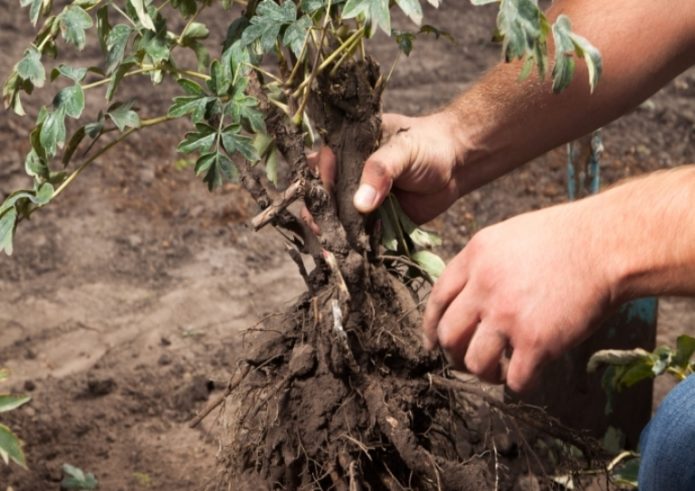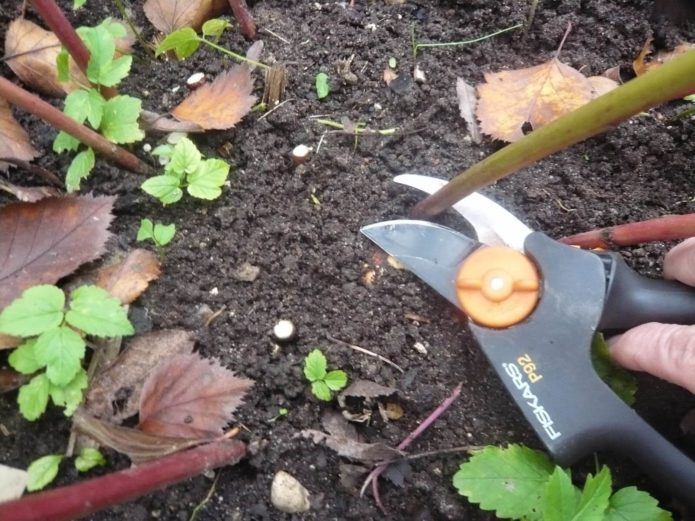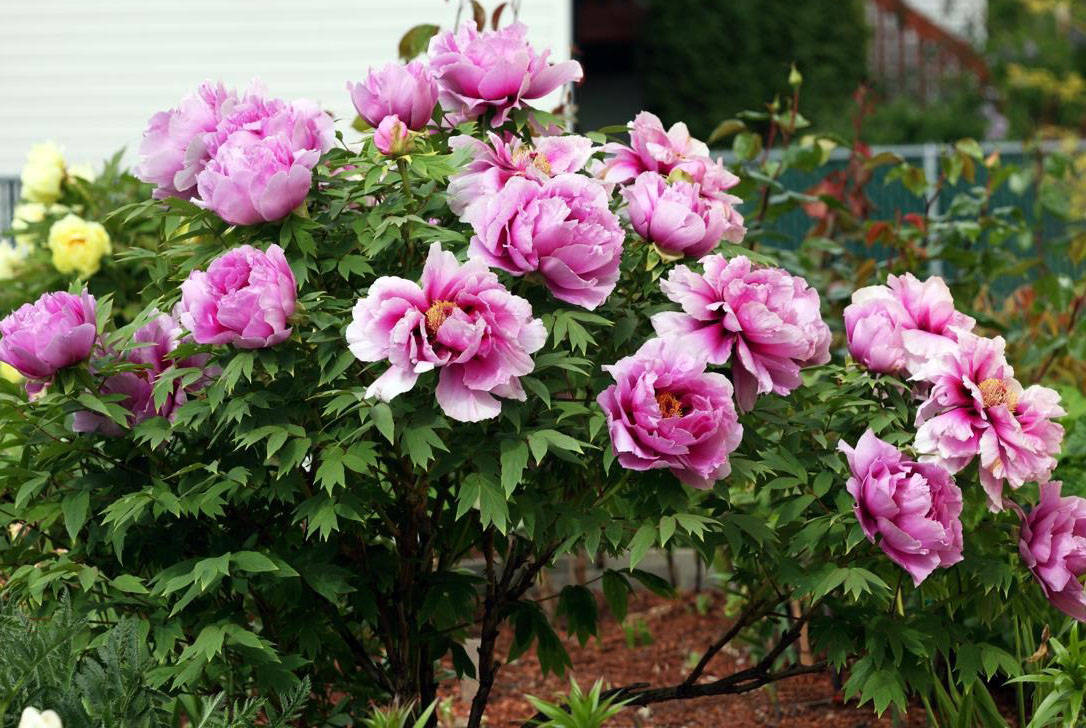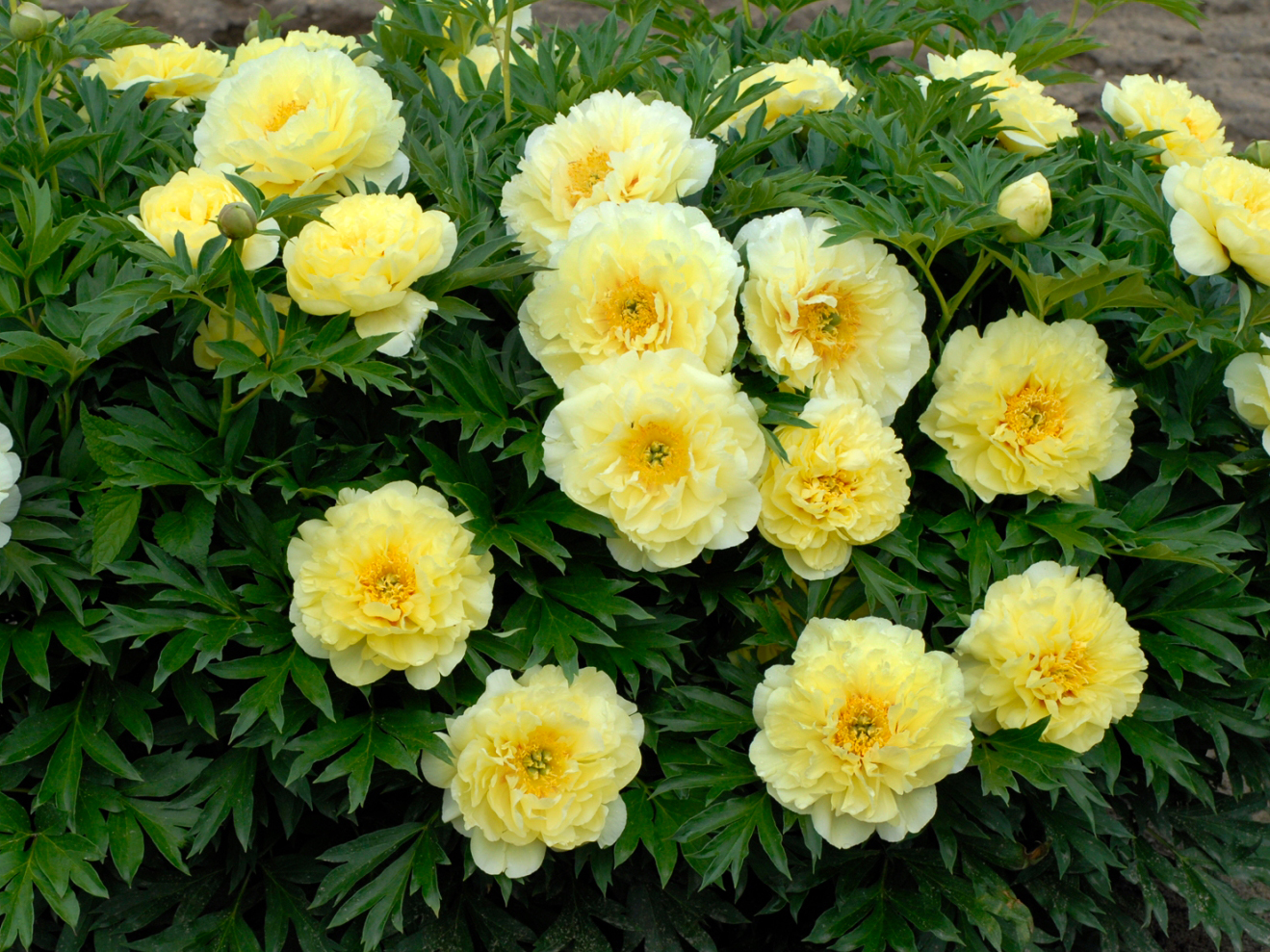The most favorable time for planting peonies is autumn. During this period, the summer heat already subsides, and the soil is sufficiently moist, especially if it rains sometimes. With the correct timing and adherence to the planting technology, the perennial rhizome quickly adapts and prepares for wintering.
Why peonies are planted in autumn
Experienced flower growers plan to plant peonies in the fall, since in spring the plant is in the active growing season and you should not disturb them during this period. Planting in spring postpones the flowering of the peony, and in some cases leads to shredding of the buds. In the most unfavorable development of events, the flower may not form buds at all in the current season.
Planting dates for peonies in autumn
Choosing the right landing time is the key to success. The optimal period is from late August to mid-September. At this time, the heat subsides, the humidity rises, and it rains periodically. Such conditions contribute to the rooting of the peony and its rapid adaptation to the soil.
Specific dates are calculated taking into account the climate of the region and the weather forecast. It is important that at least 30–40 days remain before the onset of frost. If the peony does not have time to put on small roots, the plant may die in winter.
Training
For the successful cultivation of peony, it is important to choose the right place and prepare the site. In one place the plant will live for at least 10 years, so the process should be approached thoughtfully.
Requirements for the place of cultivation and soil
Peonies prefer areas with bright, but slightly diffused lighting. Optimally, if the shade falls on the bushes from noon. In the morning, the plant should receive maximum sunlight. When planted in the shade, the bush will not bloom!
The area for the flower should be on a slight rise. The peony is contraindicated in the close location of groundwater or waterlogging of the soil in spring or in rainy weather. In the lowlands, the roots of the bush will begin to rot and it will die. You cannot plant peonies near large trees and shrubs with a powerful root system: the flower in this case will be deprived of nutrients, which will negatively affect flowering.
Peony roots need a sufficient amount of oxygen for proper development, so the soil must be loose, air and water permeable. The ideal option is loam with an acidity of no more than 6.5 units. Peat soils are absolutely not suitable for the culture.
The selected area is dug up 2–3 weeks before planting so that the soil settles and compresses. Sand is added to heavy soils for digging, humus, clay and peat are added to light soils.
Selection and processing of a seedling
A healthy peony with abundant large buds grows only from a quality seedling. The best option is an aged plant. The selected planting material should have the following qualities:
- roots not less than 20 cm in length, flexible, light shade;
- at least three sleeping and necessarily living growth points (kidneys);
- no signs of rotting and pest infestation.
To increase the viability of the plant and quick adaptation, a number of preventive measures are carried out in a new place:
- The roots are soaked in warm water and, after rinsing, their condition is assessed.All rotten or dried out areas are cut off, places of cuts are sprinkled with charcoal.
- For disinfection, the peony is placed in a weak solution of potassium permanganate for 30 minutes.
- In order to stimulate root formation and increase immunity, the roots are dusted with Kornevin or kept in a solution of Zircon.
After all treatments, the plant is placed in a cool dry place for a day. This technique promotes the formation of a cork layer on the roots, which is subsequently designed to protect them from damage and the penetration of infections.
Step-by-step instructions for planting peonies in the fall in open ground
The general order and technology of planting is generally the same for all varieties of peonies. The process consists of the following steps:
- For classical (herbaceous) peonies, pits are prepared with a diameter of 50 cm and a depth of 55–60 cm. Drainage (river sand, gravel, broken brick) 5–10 cm high is laid on the bottom.
- In the center of the pit, a hill is made of nutrient soil: soil and humus in equal proportions, 150 g of superphosphate and 350 g of bone meal per bucket of the resulting mixture.
- A seedling is set on the soil, distributing the roots around. The free space is gradually filled with soil, slightly crushing it. When falling asleep with soil, the root should not bend up, so the seedling must be kept in weight. It is difficult to do this alone, so it is better to involve an assistant in the process.
- After filling the hole, an earthen roller is formed around the seedling. The peony is watered using a bucket of water. The surface is mulched with humus or peat.
Important! The root collar of herbaceous peonies is deepened by 3-4 cm. A shallower or unnecessarily low planting will affect the state of the plant: in the first case, the buds will begin to dry out, in the second, you can not wait for flowers.
The nuances of planting ITO hybrids and tree peonies
The root system of these varieties of culture grows in breadth, so the diameter of the hole for them is recommended 90-100 cm. The depth should also be greater - about 70-80 cm.
The seedlings of ITO and tree-like varieties of peonies are placed in the pit so that the buds of renewal remain on the surface, the grafting is 10–12 cm underground. Simultaneously with the plant, a stake is placed in the hole for subsequent tying of long shoots.
Preparing for winter
Peonies are quite frost-resistant plants and do not need special shelters for the winter. The only measure in case of insufficient snow cover, in which the roots may suffer, is mulching the soil with straw, sawdust, dry leaf. You can cover the area with spruce branches. In the spring, the shelters are removed immediately after the snow melts. It is impossible to delay this process, since it will be difficult for the shoots to break through to the surface, and the development of the bush will slow down, flowering will come much later.
Important! Cut peony stems cannot be used as a shelter, since pathogens or pests that attack the bush in the next season can remain in them.
A competent choice of time, a place for planting a peony and adherence to technology will have a beneficial effect on the condition of the plant. In spring, the bush will quickly begin to release shoots and will soon delight you with bright and lush flowering.
